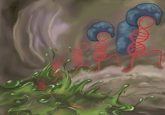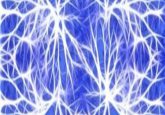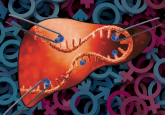The origins of RNA
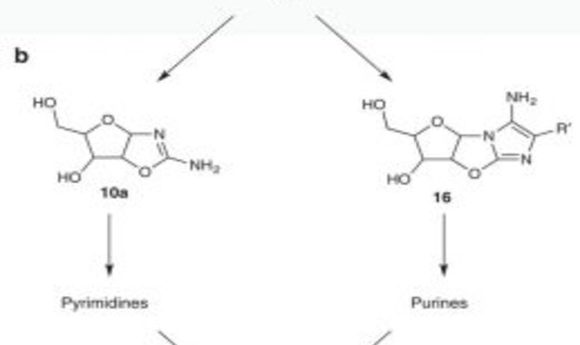
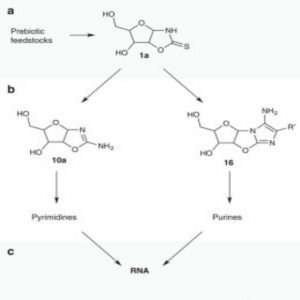
Powner and colleagues have discovered a method to produce the four ribonucleotides that make up RNA (1).
When life emerged out of the primordial soup 3.7 billion years ago, RNA was the star player: the first forms of life used RNA to store and replicate information, as well as to catalyze chemical reactions. But it wasn’t clear how the four universal building blocks of RNA came to be. Now, researchers have discovered a way to synthesize four ribonucleotides at once, shedding light on how the “RNA world” might have gotten off the ground.
Since Watson and Crick’s discovery of the structure of DNA, researchers have tried to understand how these RNA building blocks emerged. Previous work to generate the ribonucleotides produced low yields and required implausible starting materials.
In 2009, Matthew Powner, then a graduate student in John Sutherland’s laboratory and now an investigator at University College London, published a paper in Nature describing synthesis of the two RNA pyrimidines, cytidine and uridine. Although this was an advance, a challenge remained: “If you have two of four ribonucleotides, you can’t have information transfer because you need a purine to talk to a pyrimidine,” explained Powner.
In the new study, which appeared in Nature Communications, Powner and colleagues describe a way to build purines with the same methodology they used for pyrimidines. “The fact that we can make two sets of nucleotides at the same time with the same chemistry is a massive advance on what we had before,” explained Powner, senior author of the new study.
The synthesized purines have one extra oxygen atom relative to natural nucleotides, but they maintain an arrangement of atoms that allows Watson-Crick base pairing. Purines with an extra oxygen atom exist in nature and are usually the result of DNA exposure to oxidative conditions. Nucleotides are usually oxidized as the first step to being degraded and recycled by the cells. Powner wonders if the oxidized ribonucleotides were an evolutionary intermediate form that selection eventually caused to be replaced by stabler, reduced ribonucleotides .
It isn’t yet clear if ribonucleotides with an extra oxygen atom can assemble into RNA strands—a property that is necessary for the RNA to function as an information-storing molecule and catalytic enzyme. That’s a question Powner’s team is currently investigating.


